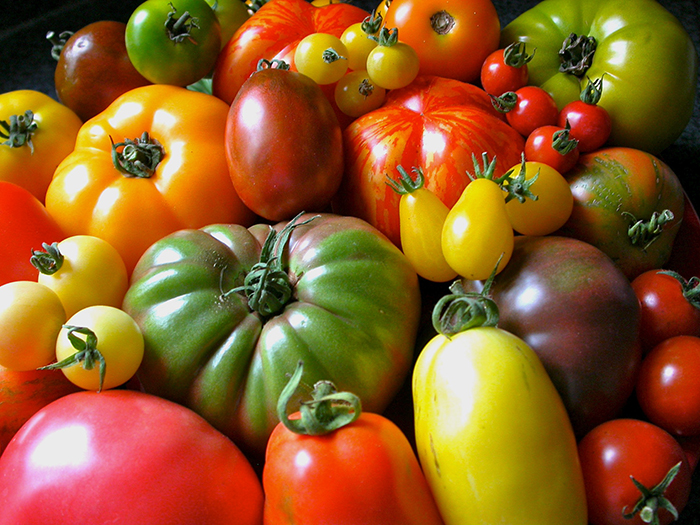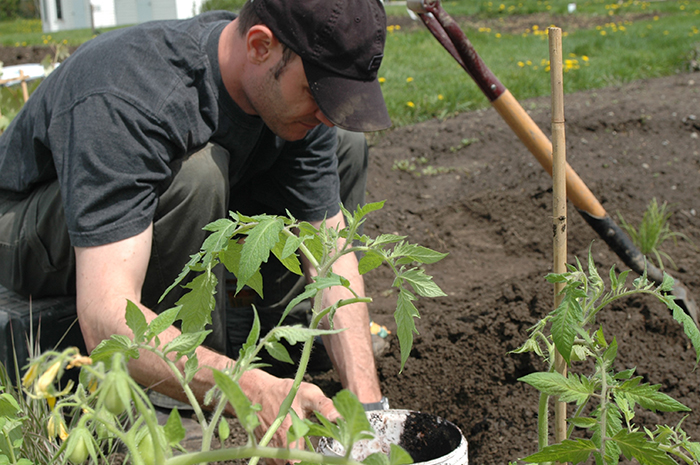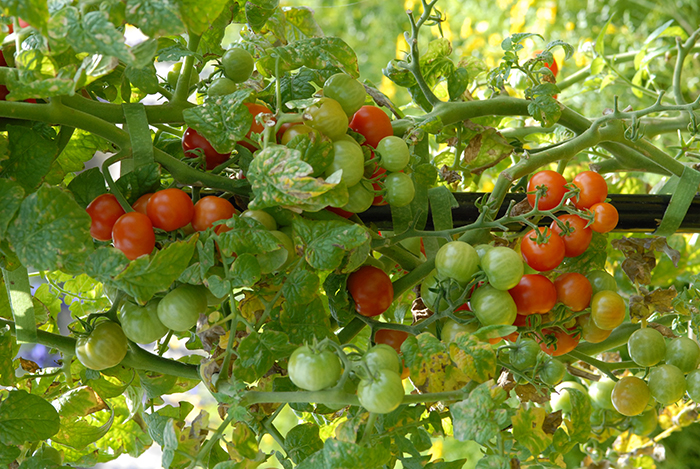Advice From a Pro: A Garden Brimming With Tomatoes and Peppers, With Albert Mondor
Regarding its Urban Agriculture Policy, the Town of Mount Royal can count on the special collaboration of Albert Mondor, horticulturist, biologist and resident of TMR. His tips on gardening will help get Townie households on the right track in creating and maintaining their vegetable garden, throughout the summer.
A Garden Brimming with Tomatoes and Peppers
By Albert Mondor, horticulturist and biologist
Tomatoes and peppers are two of the most popular plants for urban farming. Both are from the nightshade plant family, or Solanaceae, and are particularly voracious and require consistent care. Read on for some tips on how to achieve abundant tomato and pepper crops.
Thes Best Tomatoes in the Neighbourhood
The best time to plant tomatoes is when the risk of frost has passed, which tends to be in late May or early June in the Greater Montreal area.
Regardless of whether you started your plants from seed or purchased them in a garden centre, remember to acclimate them to outdoor conditions before planting. This hardening off period should start a few days before you plant them. Simply place your plants outside in a lightly shaded area, keeping them out a little longer each day.
Tomatoes must be grown in full sun in very rich, loose and well-drained soil. In the garden, it’s best to plant tomatoes in a 50/50 mixture of existing soil and compost.
If you plan to grow your tomatoes in containers on your deck or balcony instead, it’s best to choose a compact bush or cascading cultivar that produces small fruit, such as Chibikko, Tiny Tim and Tumbling Tom. That said, larger cultivars—referred to as indeterminate—can also be successfully grown in large pots, but require relatively big containers, at least 45 cm in diameter. Keep in mind that in-ground or potted indeterminate tomato plants need to be staked as they grow in vines.
Whether growing in the ground or in containers, add three to four handfuls (100 mL) of a natural slow-release fertilizer that is rich in nitrogen and potassium, around 5-3-8.
The crown and base of the main stem of each plant can also be planted beneath the surface of the soil. Be sure to prune the leaves of the main stem—you can even bury the first two nodes. This technique ensures better establishment of the roots and promotes the development of an extensive root system allowing the plant to draw more water and nutrients.
Because tomato plants do best in consistently moist soil, they will need to be watered regularly. Water plants with lukewarm water twice weekly—three times a week during a heat wave. While it may be more labour-intensive, it’s best to water your plants one by one with a watering can to ensure that each gets the right amount of water—around 5 litres for young plants, double that amount for mature plants, and less than 5 litres during harvest. This approach also ensures that you are watering the soil without touching the plants, preventing sunscald and reducing the risk of disease.
And what about suckers—should they be pruned or not? To start, it’s important to remember that tomato plants do not produce suckers. If they are allowed to grow, the shoots that sprout from where the leaves and the main stem meet will produce fruit, which means that they are not suckers in the botanical sense. A more accurate term for what we commonly refer to as suckers would be “secondary stem.”
This means that it is absolutely not necessary to remove these secondary stems since they produce fruit and, by extension, increase the harvest. However, removing secondary stems will increase the size of the tomatoes your plant produces. That means that you will have fewer tomatoes and the weight of your harvest could be cut by more than a third in some cases.

(Credit: Josée Latour) (Credit: Albert Mondor)
(Credit: Albert Mondor) (Credit: Albert Mondor)
(Credit: Albert Mondor)
Sweet Peppers of your Dreams
Like tomatoes, peppers must be planted in an area that is well protected from excessive wind, heat and sun. They should ideally be planted a bit later than tomato plants, generally a week or two after.
If you are growing your peppers in the ground, choose an area with compost-rich, loose and well-drained soil. If you prefer to grow your peppers in pots, it’s best to plant them in a potting soil consisting of compost and sphagnum peat moss. In this case, choose stocky cultivars, such as Lunchbox and Mini Bell, which produce small fruit.
Since peppers are particularly voracious, nourish each plant with three to four handfuls (100 mL) of a natural, slow-release granular fertilizer that is rich in nitrogen and potassium (around 5-3-8) when you plant them.
You can also add mycorrhizal fungi, which is a good option for plants that tend to be fussy, such as pepper and tomato plants. This growth booster serves to extend the root system of plants, which helps them absorb the water and nutrients they need for better flowering, resulting in a more abundant and higher quality harvest.
Two days before planting, cut the first two leaves at the bottom of each plant so you can bury the stem about ten centimetres deep. This technique ensures better establishment of the roots and promotes the development of an extensive root system allowing the plant to absorb more water and nutrients.
Once the first flowers begin to bloom, begin spraying the leaves of your pepper plants with liquid seaweed; you can also do this for tomato plants. Spray a solution of seaweed and water on your plants early in the morning once every 10 to 15 days. Few fertilizers are as effective for achieving sweet pepper perfection!
Like tomatoes, peppers do best in consistently moist soil, so they must be watered regularly. Water plants twice weekly—three times a week during a heat wave—ideally with lukewarm water.



